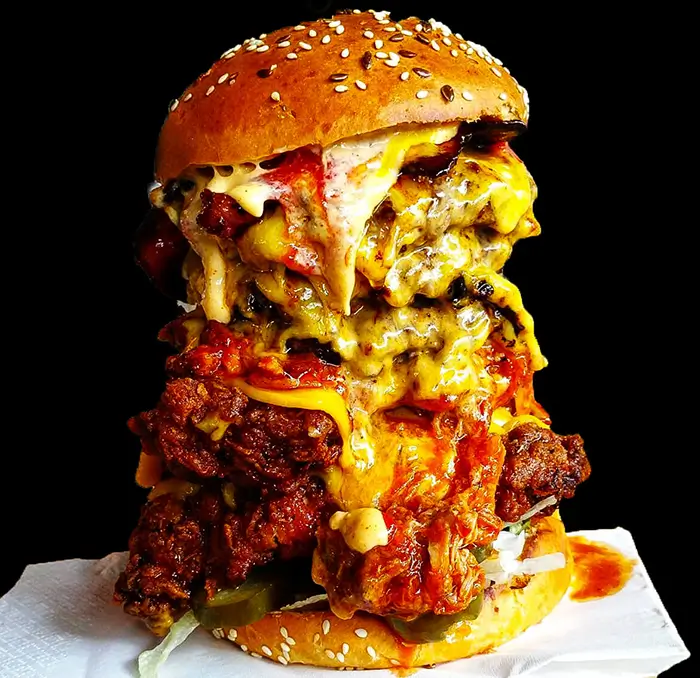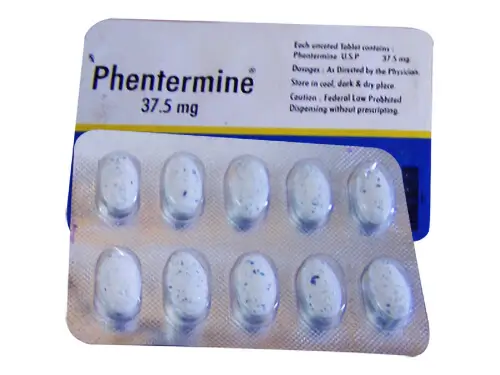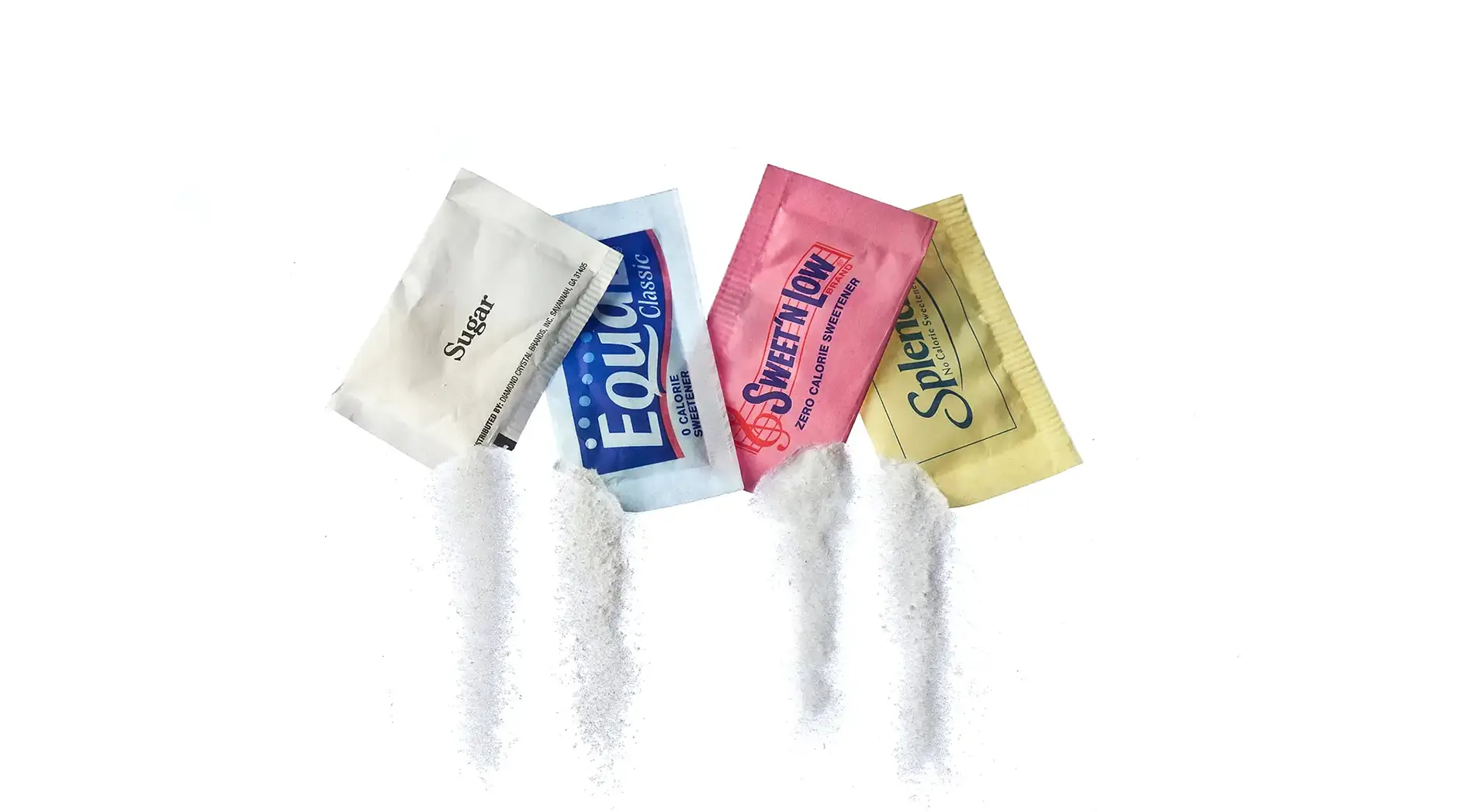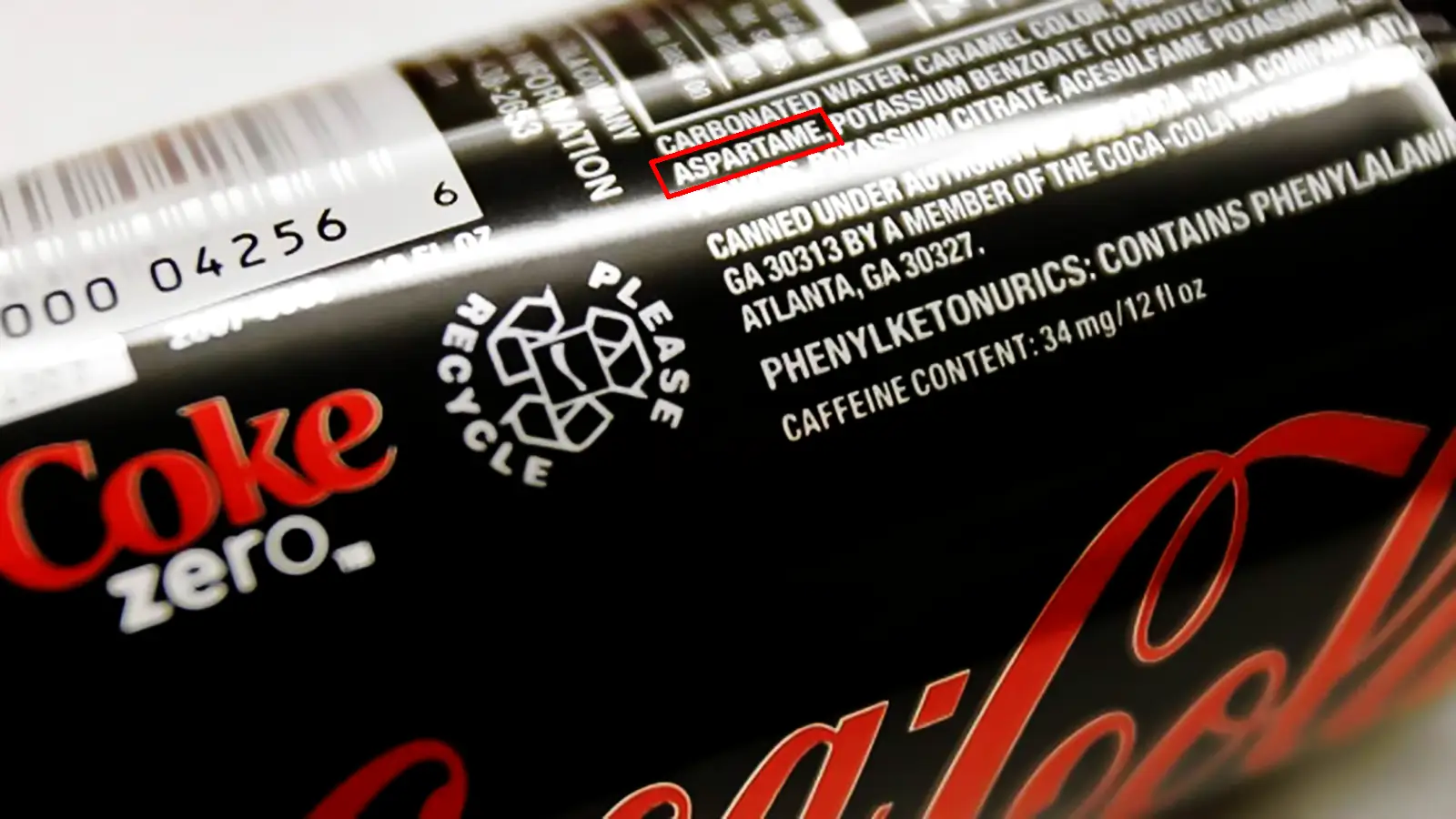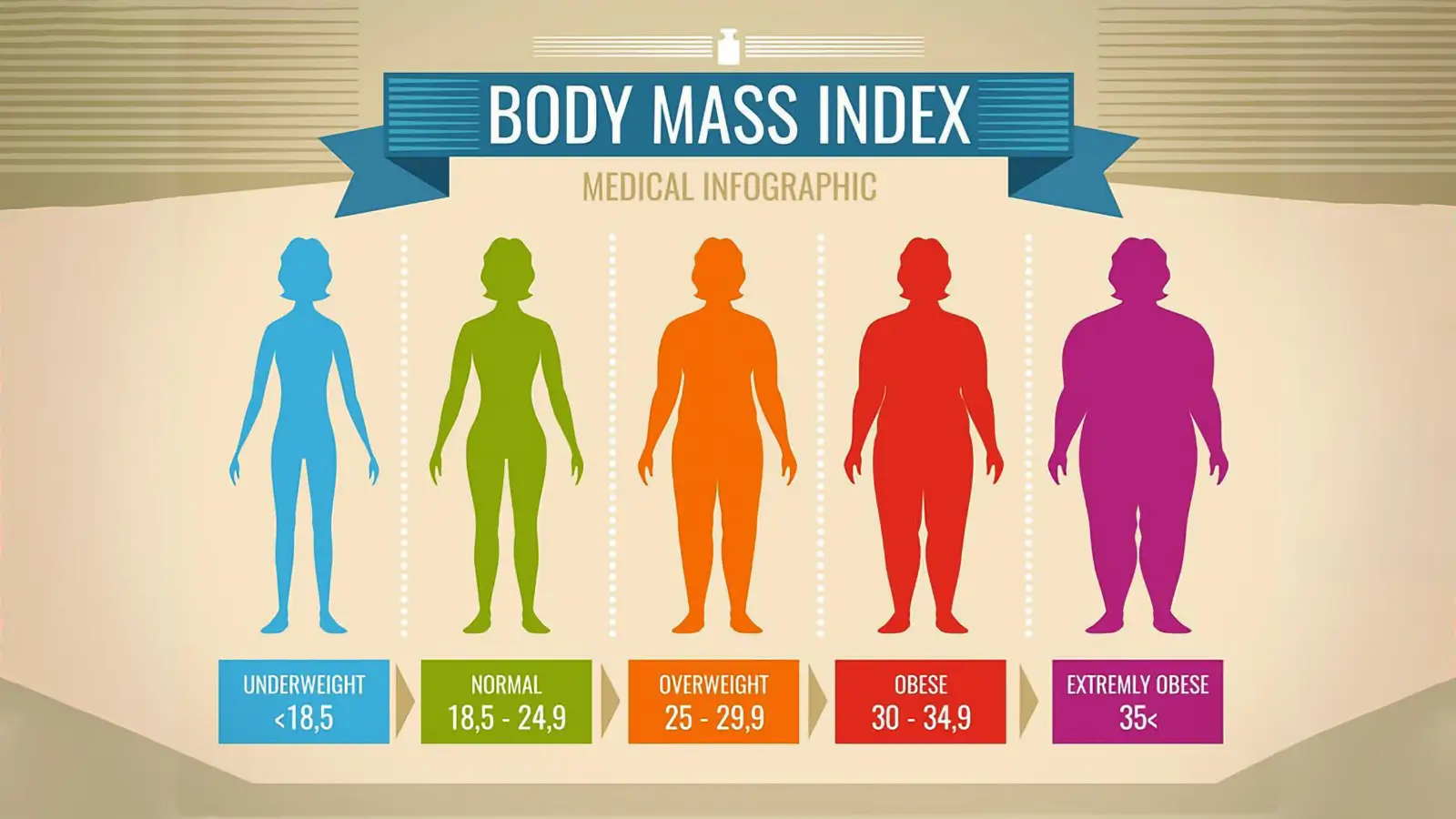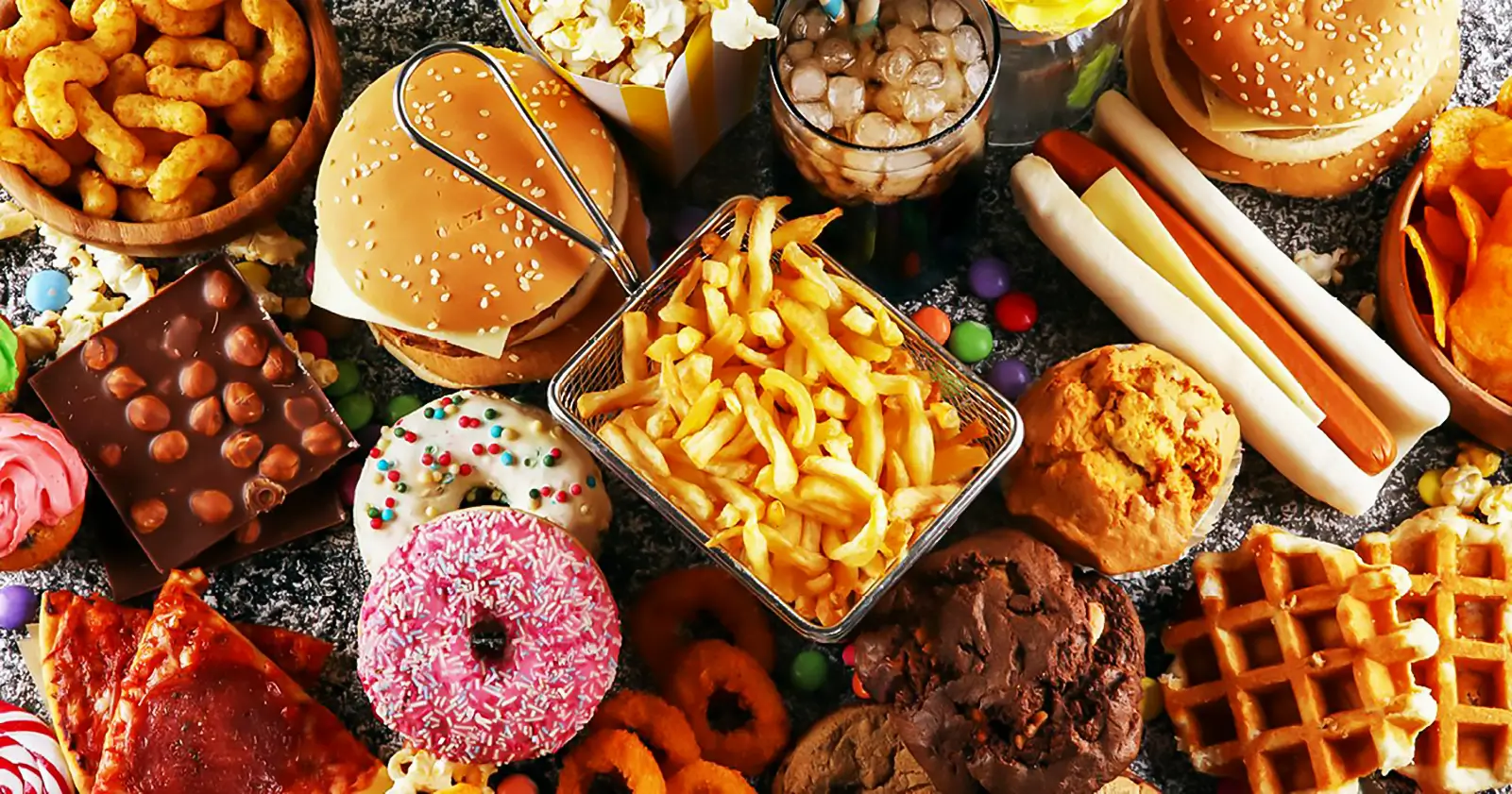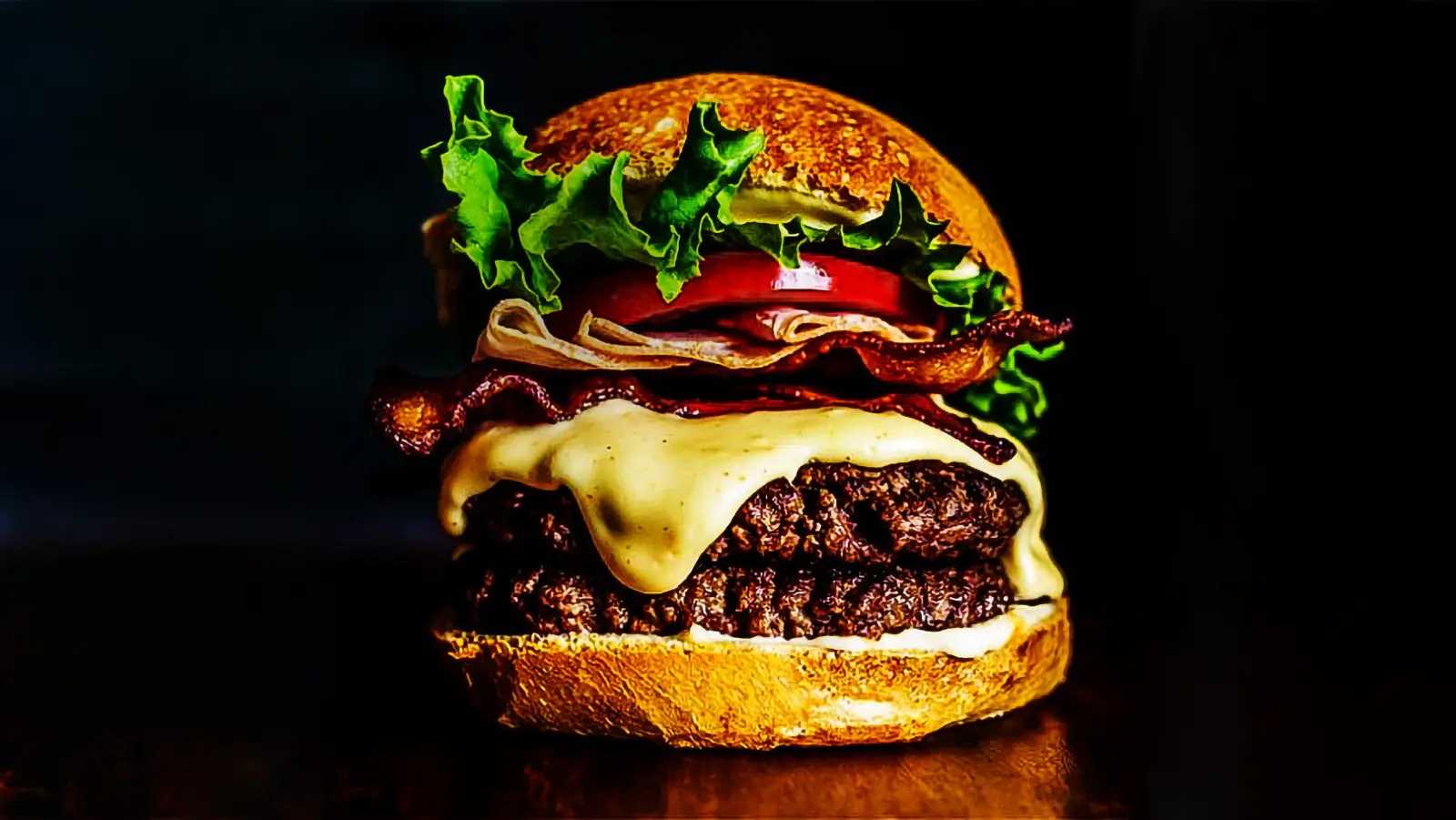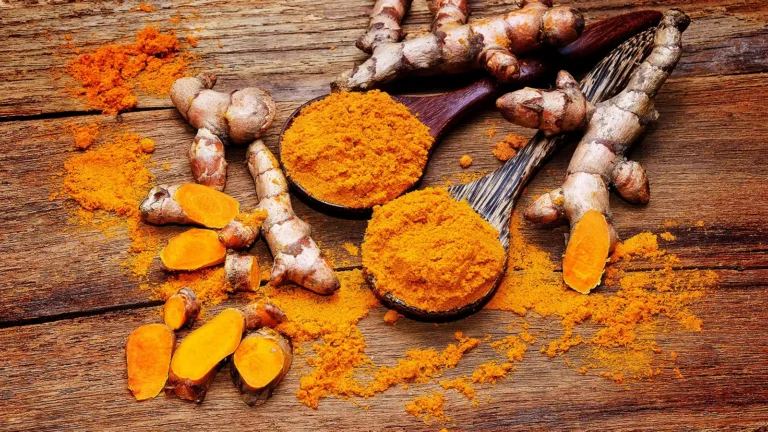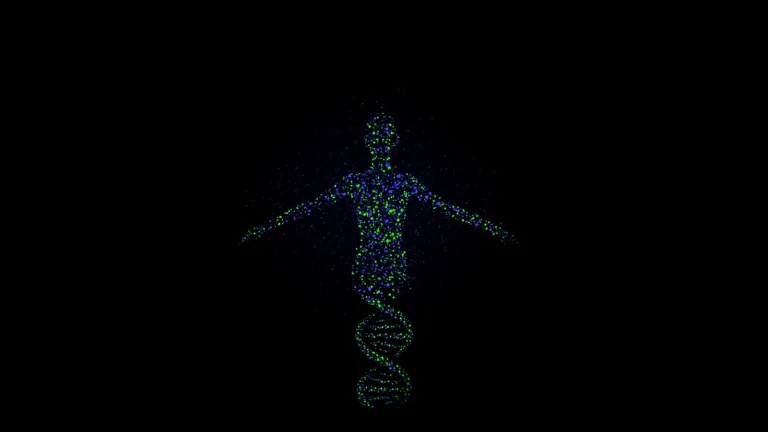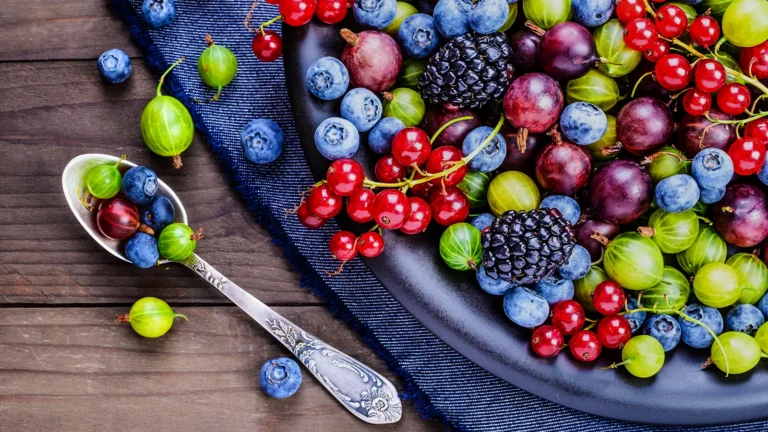Binge eating disorder- The psychology of hunger
In nature, there is no refined sugar or fat. Our brain had never been exposed to a combination of the two all at once forcing us into binge eating disorder.
Milos Pokimica
Written By: Milos Pokimica
Medically Reviewed by: Dr. Xiùying Wáng, M.D.
Updated October 12, 2023Eating for pleasure is nothing new. Binge eating disorder is nothing new. The ability to have excess food to binge is.
Binge eating disorder (BED) is a type of eating disorder that is now officially recognized as a diagnosis. It affects nearly 2% of the global population and can lead to additional health problems linked to diets, such as high cholesterol and diabetes.
Feeding and eating disorders are not solely about food, which is why they are classified as psychiatric disorders. People usually develop them to cope with a deeper issue or another psychological condition, such as anxiety or depression. The most common type of eating disorder in the United States is binge eating disorder. People suffering from binge eating disorder frequently feel out of control and consume a large amount of food at one time (called a binge). People with binge eating disorder, unlike those with other eating disorders, do not vomit their food after the binge. According to research, males and females experience binge eating disorder in equal proportions.
Overeating is a natural part of being human; we can overeat in social settings (e.g., Christmas lunch) or alone (e.g., a night in with Netflix and takeaway). Overeating occurs when a person eats past the point of being comfortably full, whether by choice or by accident. We may overeat if food is present, if the food we are eating is pleasurable, if we are bored or distracted, or if it soothes or comforts us (e.g., when feeling sad, overwhelmed, or after a tough day).
A binge is distinct from overeating and far more common. It is the intense desire to overeat that is felt repeatedly over time, accompanied by feelings of shame, guilt, and being out of control. Binge eating is extremely distressing and can impair a person’s ability to fully participate in all aspects of life (e.g., work or school, recreational activities, socializing, and relationships).
Binge eating disorder is defined as having at least three of the following symptoms while bingeing:
- Eating more quickly than usual
- Eating until uncomfortably full
- Eating large amounts of food when not hungry
- Eating alone to avoid embarrassment
- Feeling disgusted, depressed, or guilty afterward
Binge eating disorder is an addiction like any other addiction only in this case the illegal substance is highly palatable food. This is actually an addiction we all have but in some individuals, it might represent itself not just as obesity but as binge eating. To understand this addiction we have to understand how our brain evolved and understand that today we are maladapted to our environment in an evolutionary sense.
In nature, there is no free sugar or free fat. Energy is stored in complex whole-food packages and one or the other form. Nuts and seeds have their energy stored in the form of fat and grains for example in the form of complex sugars or carbohydrates, and they come with fiber and other substances. Our brain had never been exposed to refined sugar or fat before and especially never been exposed to a combination of the two in high doses all at once. For example, when we eat ice cream or milk chocolate, we have a sugar and fat combination that does not exist in nature. What happens in the brain is the same thing that happens when you inhale crack cocaine.
Crack cocaine itself is a refined product. Cocaine naturally occurs only in the coca plant. You cannot get high at that high level if you chew the leaves as Indian tribes do. It is a traditional stimulant to overcome hunger, fatigue, and thirst.
However, when we extract or in other words refine the cocaine or sugar or fat it is a different story. We can eat poppy seeds as much as we like but when we refine the opium and inject it into the vein or drink the poppy tea, well, here comes the magic dragon. In typical research involved with hunger and weight regulation, the focus was on so-called metabolic or homeostatic hunger. Metabolic hunger is driven by real physiological necessity and is most commonly identified with the rumblings of an empty stomach. By the 1980s researchers had mapped out all of the main hormones and neural connections responsible for metabolic hunger.
By the late 1990s, brain imaging studies and experiments with rodents had begun to reveal a second previously unknown biological pathway. This pathway was underlying the process of eating for pleasure. As I wrote before in the case of obesity standard regulatory system will tell the brain that we have fat deposits stored for an extended period and that we can endure little hunger. Overeating is a form of drug addiction.
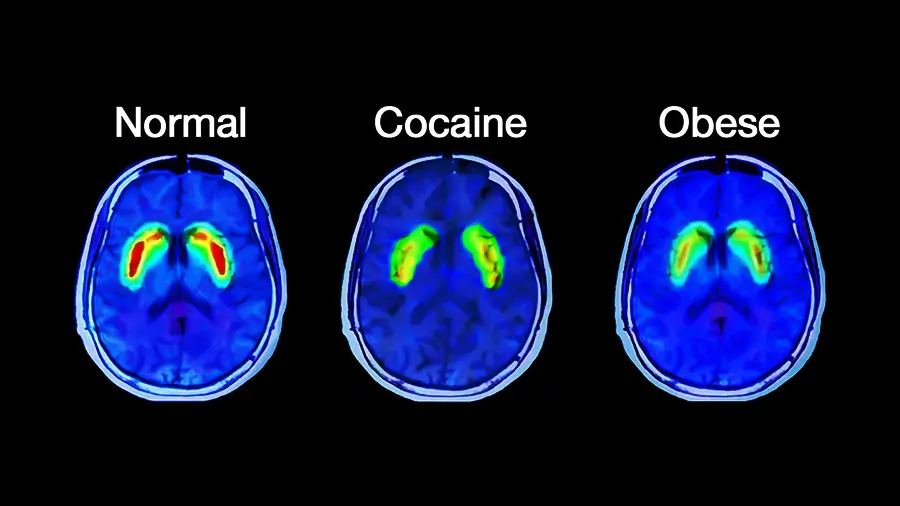
What was found was that extremely sweet or fatty food that we have today but were not present in nature, captivate the brain reward circuit in much the same way that cocaine and gambling can do. Even just seeing the food will trigger the brain’s response. As quickly as such food meets the tongue, taste buds give signals to different areas of the brain. That will result in a response that will trigger the release of the neurochemical dopamine. Frequently overeating highly palatable foods saturate the cerebellum with a significant amount of dopamine that forces the brain to ultimately adjusts by desensitizing itself, decreasing the number of cellular receptors that identify and respond to the neurochemical.
Having a high and constant dopamine level is a form of stimulus that is over-excessive, something called supernormal stimuli. It is a term that evolutionary biologists apply to represent the stimulus that will evoke a response more significant than the stimulus for which it evolved, even if it is artificial. The food industry uses it all the time almost in every possible way they can think of. They even try to link emotional responses and feelings of social acceptance and well-being with supernormal stimuli.
Consequently, as a resistance build-up, people may in truth, proceed to gorge as a process of recollecting or even preserving a sense of well-being. This is possibly the reason why the downregulation of leptin receptors in the brain happens also.
There was a series of research done from 2007 to 2011, at the University of Gothenburg in Sweden. They proved that the release of ghrelin (the hunger hormone) by the abdomen immediately enhances the discharge of dopamine in the brain’s award circuit (Anderberg et al., 2016). This is a significant finding. They also discovered that medications that prevent ghrelin from binding to neurons restrain the tendency for overeating in people who are obese.
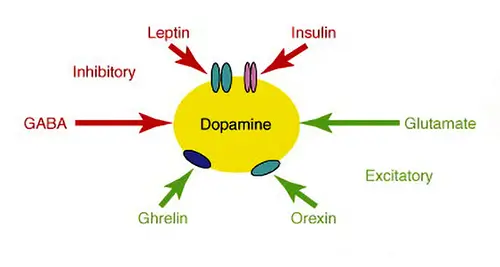
Under normal conditions, leptin and insulin suppress the release of dopamine. In theory, this should reduce the sense of pleasure as a meal continues. Recent rodent studies suggest that the brain stops responding to these hormones as the amount of fatty tissue in the body increases (Massadi et al., 2019). Thus, continued eating keeps the brain awash in dopamine even as the threshold for pleasure keeps going up. A form of maladaptation to our current environment and way of eating and living. If we switch the stimuli from food to cocaine or nicotine or caffeine, we can suppress the hunger drive. Alternatively, also vice versa. If we stop smoking appetite goes up. Tobacco use was linked to hunger-suppressing effects even among Pre-Columbian indigenous Americans. Cigarette smoking for weight loss might not be a good idea, because we will swap one addiction for another. You can try extracted nicotine in products like chewing gum or electronic cigarettes with a caffeine combination. There is, for example, particular drugs that target the brain hunger center for lowering appetite like Belviq, Contrave, Saxenda, Phentermine, and Qsymia. Phentermine is an amphetamine. Regular “speed” can work also. The anti-seizure drug Topamax for epilepsy and migraine headaches lowers the appetite and is registered to treat binge eating disorders. If everything else fails, there are seven weight loss surgeries registered so far, from cutting, and stapling to ballooning. All because of supernormal stimuli of refined food.
There is a group of sensitive individuals that will respond excessively to delicious foods. They would have an excessive response in the brain reward circuit that will dramatically alter their brain chemistry. An overstimulated brain reward circuit will override any self-control mechanism so that willpower will rarely if ever be sufficient to force them to resist eating those foods once they are around creating a binge eating disorder. Researchers at The Scripps Research Institute in Jupiter, Florida found that in rats that have been given unrestricted access to high-calorie foods, their brains showed neurological changes in their reward circuit (Johnson et al., 2010).
It was the first study that showed that the neurological mechanism that drives people into drug addiction is also driving the compulsion for overeating, pushing people into obesity.
High-calorie foods, in this case, were sausage, bacon, cheesecake, and chocolate. Some of the rats were given only one hour a day to feast on high-fat foods, while others had unlimited access 24 hours a day. Both groups were given access to a typical, healthy lab rat chow food. The one group that possessed infinite access to high-calorie food ate little to none of the standard bland low-calorie chow alternatives. They quickly had grown obese because they eat as much as they could, about twice the amount of calories as the control.
The big surprise was that even the rats that had limited access to junk food did their best to keep up. During that one hour, they ate as much as they can with no stopping. They managed to consume, on average, 66% of their daily calories in the course of that one single hour per day and quickly developed a pattern of compulsive binge eating disorder. It was also observed that a group of obese rats with unlimited access to junk food had shown a severely increased threshold for reward levels. The same thing happens with drug addiction. After showing that obese rats had clear addiction-like food-seeking behaviors and that an increased threshold for reward levels is forcing them to seek more and more to reach the same level of reward the researchers investigated underlying neurological mechanisms that are responsible for these changes.
There is a specific receptor in the brain known to play a significant role in vulnerability to drug addiction, the dopamine D2 receptor. In the brain, there are neurotransmitters like dopamine. Dopamine is a feel-good chemical that will get released when we have some pleasurable experience like sex or food. The D2 receptor responds to dopamine. Cocaine, for example, is a drug that increases dopamine levels in the brain by blocking its retrieval. Overstimulation of the dopamine receptors with any supernormal stimuli will eventually lead to neural adaptation in the form of downregulation of the receptors. Also, this was shown in the study too. Levels of the D2 dopamine receptors were significantly reduced in the brains of obese animals. The same thing happens to drug addicts. To determent the level of influence of dopamine in the rats eating behavior, a virus was inserted into the brains of a test group of animals to knock out their dopamine D2 receptors. Addiction-like behavior happened almost instantly. The next day their brains changed into a state that was consistent with an animal that had been overeating for several weeks. Also, the animals had become compulsive in their eating behaviors and developed binge eating disorders. The research that took three years to finish confirms the addictive properties of junk food.
Animals binge-eating lipids and animals binge-eating sugars experience different physiological effects, but the most substantial impact can be brought by the combination of neural effects from both of these ingredients. Actually, the most desired food for the lab rats appeared to be a food item with the highest combination of fat and sugar: cheesecake.
References:
- Anderberg, R. H., Hansson, C., Fenander, M., Richard, J. E., Dickson, S. L., Nissbrandt, H., Bergquist, F., & Skibicka, K. P. (2016). The Stomach-Derived Hormone Ghrelin Increases Impulsive Behavior. Neuropsychopharmacology : official publication of the American College of Neuropsychopharmacology, 41(5), 1199–1209. https://doi.org/10.1038/npp.2015.297
- Al Massadi, O., Nogueiras, R., Dieguez, C., & Girault, J. A. (2019). Ghrelin and food reward. Neuropharmacology, 148, 131–138. https://doi.org/10.1016/j.neuropharm.2019.01.001
- Johnson, P. M., & Kenny, P. J. (2010). Dopamine D2 receptors in addiction-like reward dysfunction and compulsive eating in obese rats. Nature neuroscience, 13(5), 635–641. https://doi.org/10.1038/nn.2519
- Palmiter R. D. (2007). Is dopamine a physiologically relevant mediator of feeding behavior?. Trends in neurosciences, 30(8), 375–381. https://doi.org/10.1016/j.tins.2007.06.004
- Obradovic, M., Sudar-Milovanovic, E., Soskic, S., Essack, M., Arya, S., Stewart, A. J., Gojobori, T., & Isenovic, E. R. (2021). Leptin and Obesity: Role and Clinical Implication. Frontiers in endocrinology, 12, 585887. https://doi.org/10.3389/fendo.2021.585887
- Crujeiras, A. B., Carreira, M. C., Cabia, B., Andrade, S., Amil, M., & Casanueva, F. F. (2015). Leptin resistance in obesity: An epigenetic landscape. Life sciences, 140, 57–63. https://doi.org/10.1016/j.lfs.2015.05.003
- Peng, J., Yin, L., & Wang, X. (2021). Central and peripheral leptin resistance in obesity and improvements of exercise. Hormones and behavior, 133, 105006. https://doi.org/10.1016/j.yhbeh.2021.105006
Related Posts
Do you have any questions about nutrition and health?
I would love to hear from you and answer them in my next post. I appreciate your input and opinion and I look forward to hearing from you soon. I also invite you to follow us on Facebook, Instagram, and Pinterest for more diet, nutrition, and health content. You can leave a comment there and connect with other health enthusiasts, share your tips and experiences, and get support and encouragement from our team and community.
I hope that this post was informative and enjoyable for you and that you are prepared to apply the insights you learned. If you found this post helpful, please share it with your friends and family who might also benefit from it. You never know who might need some guidance and support on their health journey.
– You Might Also Like –

Learn About Nutrition
Milos Pokimica is a doctor of natural medicine, clinical nutritionist, medical health and nutrition writer, and nutritional science advisor. Author of the book series Go Vegan? Review of Science, he also operates the natural health website GoVeganWay.com
Medical Disclaimer
GoVeganWay.com brings you reviews of the latest nutrition and health-related research. The information provided represents the personal opinion of the author and is not intended nor implied to be a substitute for professional medical advice, diagnosis, or treatment. The information provided is for informational purposes only and is not intended to serve as a substitute for the consultation, diagnosis, and/or medical treatment of a qualified physician or healthcare provider.NEVER DISREGARD PROFESSIONAL MEDICAL ADVICE OR DELAY SEEKING MEDICAL TREATMENT BECAUSE OF SOMETHING YOU HAVE READ ON OR ACCESSED THROUGH GoVeganWay.com
NEVER APPLY ANY LIFESTYLE CHANGES OR ANY CHANGES AT ALL AS A CONSEQUENCE OF SOMETHING YOU HAVE READ IN GoVeganWay.com BEFORE CONSULTING LICENCED MEDICAL PRACTITIONER.
In the event of a medical emergency, call a doctor or 911 immediately. GoVeganWay.com does not recommend or endorse any specific groups, organizations, tests, physicians, products, procedures, opinions, or other information that may be mentioned inside.
Editor Picks –
Milos Pokimica is a doctor of natural medicine, clinical nutritionist, medical health and nutrition writer, and nutritional science advisor. Author of the book series Go Vegan? Review of Science, he also operates the natural health website GoVeganWay.com
Latest Articles –
Plant Based News
-
Vegan Cheese Brand Miyoko’s Introduces Taco Blend ‘Shreds’
on July 5, 2025
-
Comforting Curried Veggies
on July 5, 2025
-
10 Vegan Summer Breakfast Ideas
on July 5, 2025
-
New Netflix Documentary Highlights Impact Of Fishing On Sharks
on July 4, 2025
-
NotCo And Doritos Launch Flamin’ Hot Plant-Based Chicken Nuggets And Mayo In Chile
on July 4, 2025
-
Iconic US National Parks To Get 50% Plant-Based Menus
on July 4, 2025
-
Kung Pao Chickpeas Stir Fry
on July 4, 2025
Top Health News — ScienceDaily
- Frozen light switches: How Arctic microbes could revolutionize neuroscienceon July 5, 2025
In the frozen reaches of the planet—glaciers, mountaintops, and icy groundwater—scientists have uncovered strange light-sensitive molecules in tiny microbes. These “cryorhodopsins” can respond to light in ways that might let researchers turn brain cells on and off like switches. Some even glow blue, a rare and useful trait for medical applications. These molecules may help the microbes sense dangerous UV light in extreme environments, and scientists believe they could one day power new […]
- Scientists discovered how a scent can change your mindon July 4, 2025
Mice taught to link smells with tastes, and later fear, revealed how the amygdala teams up with cortical regions to let the brain draw powerful indirect connections. Disabling this circuit erased the links, hinting that similar pathways in humans could underlie disorders like PTSD and psychosis, and might be tuned with future brain-modulation therapies.
- New IQ research shows why smarter people make better decisionson July 4, 2025
Smarter people don’t just crunch numbers better—they actually see the future more clearly. Examining thousands of over-50s, Bath researchers found the brightest minds made life-expectancy forecasts more than twice as accurate as those with the lowest IQs. By tying cognitive tests and genetic markers to real-world predictions, the study shows how sharp probability skills translate into wiser decisions about everything from crossing the road to planning retirement—and hints that clearer […]
- New research confirms that neurons form in the adult brainon July 4, 2025
Researchers from Sweden have discovered that the human brain continues to grow new cells in the memory region—called the hippocampus—even into old age. Using advanced tools to examine brain samples from people of all ages, the team identified the early-stage cells that eventually become neurons. These findings confirm that our brains remain more adaptable than previously believed, opening the door to potential treatments for memory loss and brain-related disorders.
- Scientists starved worms — then discovered the switch that controls agingon July 4, 2025
Scientists have discovered that starving and then refeeding worms can reveal surprising secrets about aging. When a specific gene (called TFEB) is missing, these worms don’t bounce back from fasting—they instead enter a state that looks a lot like aging in humans, with signs of stress and cell damage. This research gives scientists a simple but powerful way to study how aging begins—and how it might be stopped. Even more intriguing, the same process might help explain how some cancer […]
- Scientists just found a major flaw in a key COVID drug studyon July 4, 2025
A promising path to fighting COVID and other coronaviruses may have been based on a serious mistake. Scientists had zeroed in on a part of the virus called the NiRAN domain, believed to be a powerful target for new antiviral drugs. But when a Rockefeller team revisited a highly cited 2022 study, they found the evidence didn’t hold up. Key molecules shown in the original virus model were actually missing. Their discovery could help prevent wasted time and resources in the race to develop […]
- A cholesterol secret inside ticks may halt Lyme disease spreadon July 4, 2025
Scientists have discovered that the bacteria behind Lyme disease and anaplasmosis have a sneaky way of surviving inside ticks—they hijack the tick’s own cell functions to steal cholesterol they need to grow. By tapping into a built-in protein pathway, the bacteria keep themselves alive until they can infect a new host. The research opens the door to new methods of stopping these diseases before ticks ever get the chance to bite. A new web tool also reveals that this trick might be used by […]
PubMed, #vegan-diet –
- Exploring the role of gut microbiota in rheumatoid arthritis: the effects of diet and drug supplementationon July 2, 2025
Rheumatoid Arthritis (RA) is a chronic autoimmune disease that mostly breaks out at the joints. It further causes bone erosion and decreased life quality due to severe pain. Current drugs are mainly focused on reducing pain, but unable to terminate the disease progression. This study aims to determine the effect of diet types (Western, Vegan and Mediterranean) on RA progression. Some dietary supplements and drug administration (Huayu-Qiangshen-Tongbi formula or Leflunomide plus Methotrexate) […]
- Blood biomarkers of Alzheimer’s disease in Australians habitually consuming various plant-based dietson June 30, 2025
BackgroundEvidence suggests that plant-based diets (PBDs) may be protective against neurodegenerative diseases such as Alzheimer’s disease (AD).ObjectiveThis study examined associations between blood-based AD biomarkers in individuals 30-75 years without current or diagnosed cardiovascular disease following different PBDs versus regular meat-eating diets (RMEs).MethodsThis secondary analysis of the Plant-based Diets study measured Aβ(1-42)/Aβ(1-40), p-tau181, NFL, and GFAP in 237 plasma […]
- Zinc supplementation among zinc-deficient vegetarians and vegans restores antiviral interferon-α response by upregulating interferon regulatory factor 3on June 28, 2025
CONCLUSION: We identified zinc-dependent IRF3 expression as an essential cellular mechanism behind impaired IFNα response in zinc-deficient subjects. This may contribute to disturbed antiviral immunity and cause increased susceptibility to virus infections in vivo. Oral zinc supplementation effectively restored IRF3 and IFNα levels. Hence, nutritional interventions may become increasingly important in order to prevent health implications from micronutrient deficiencies among vegetarians and…
- Micronutrient intake and nutritional status in 16-to-24-year-olds adhering to vegan, lacto-ovo-vegetarian, pescatarian or omnivorous diets in Swedenon June 26, 2025
CONCLUSION: Youth, regardless of dietary practice, need support to ensure adequate micronutrient intakes, particularly for vitamin D and selenium. Further research is required to evaluate iodine nutrition in Swedish youth.
- Integrating comparative genomics and risk classification by assessing virulence, antimicrobial resistance, and plasmid spread in microbial communities with gSpreadCompon June 26, 2025
CONCLUSIONS: The gSpreadComp workflow aims to facilitate hypothesis generation for targeted experimental validations by the identification of concerning resistant hotspots in complex microbial datasets. Our study raises attention to a more thorough study of the critical role of diet in microbial community dynamics and the spread of AMR. This research underscores the importance of integrating genomic data into public health strategies to combat AMR. The gSpreadComp workflow is available at…
Random Posts –
Featured Posts –

Latest from PubMed, #plant-based diet –
- Low-Carbohydrate Diet Patterns That Favor High-Quality Carbohydrates Are Associated with Beneficial Long-Term Changes in Biomarkers of Inflammation and Oxidative Stress in the Framingham Offspring…by Ghaida F Aloraini on July 4, 2025
CONCLUSIONS: LCD patterns that preserved high-quality carbohydrates while replacing low-quality carbohydrates sources, such as refined grains and added sugars, with fat and protein were inversely associated with inflammation and oxidative stress score, potentially lowering chronic disease risk.
- Linking the Planetary Health Diet Index to sarcopenia: the mediating effect of the non-high-density lipoprotein cholesterol to high-density lipoprotein cholesterol ratio (NHHR)by Huan Chen on July 4, 2025
CONCLUSION: This study highlights the observed negative correlation between PHDI and sarcopenia, with NHHR acting as a partial mediator. These findings emphasize the potential importance of dietary patterns in strategies aimed at preventing sarcopenia.
- Design and conduct of a full diet-controlled, parallel, 2-week residential trial for diabetes prevention without weight loss in Asian Chinese and European Caucasian adults with prediabetes: the New…by Ivana R Sequeira-Bisson on July 4, 2025
BACKGROUND: The causal underpinning of increased metabolic risk and previously observed dichotomous plasma metabolome in Asian Chinese vs. European Caucasian remains undetermined and may be hypothesised as attributed to ethnicity (genetic background), pathology (dysglycaemia) and/or lifestyle (habitual diet). We aimed to investigate the underlying cause(s) and the effect of dietary intervention on biomarkers of type 2 diabetes (T2D) in cohorts with prediabetes. The diets are a generic current…
- Comparison of digestive capacity in broilers raised on diets with or without soybean mealby Xiaomeng Ye on July 4, 2025
The objective of this study was to investigate the digestive capacity of broilers raised on diets with or without soybean meal, and evaluate the impact on the determination of metabolizable energy (ME) in feed. Two hundred and eighty-eight 7-day-old Arbor Acres male broilers were divided into 6 blocks based on initial body weight (BW). Within each block, 48 broilers were randomly assigned to one of the two types of diet: a corn-soybean meal diet (CSMD) and a corn-based soybean meal-free diet…
- Dietary Patterns and Incident Chronic Constipation in Three Prospective Cohorts of Middle- and Older-aged Adultsby Yiqing Wang on July 4, 2025
CONCLUSION: Our findings suggest that dietary patterns emphasizing plant-based foods and healthy fats may protect against constipation, informing future dietary interventions and treatments for chronic constipation.
- Computational Strategies to Enhance Vitamin B12 Biosynthesis Potential of Microbesby Vidhyashri Nelliyan on July 4, 2025
Vitamin B(12) is a vital nutrient for the normal functioning of many metabolic processes. It has a characteristic corrinoid ring structure with a cobalt ion. Its complex chemical structure demands 30 enzyme-catalyzed steps for synthesis. Deficiency of this vitamin is common among individuals who are predominantly on a strict vegetarian diet. Large-scale production of this vitamin for dietary supplementation is primarily through microbial fermentation. This review discusses various […]
